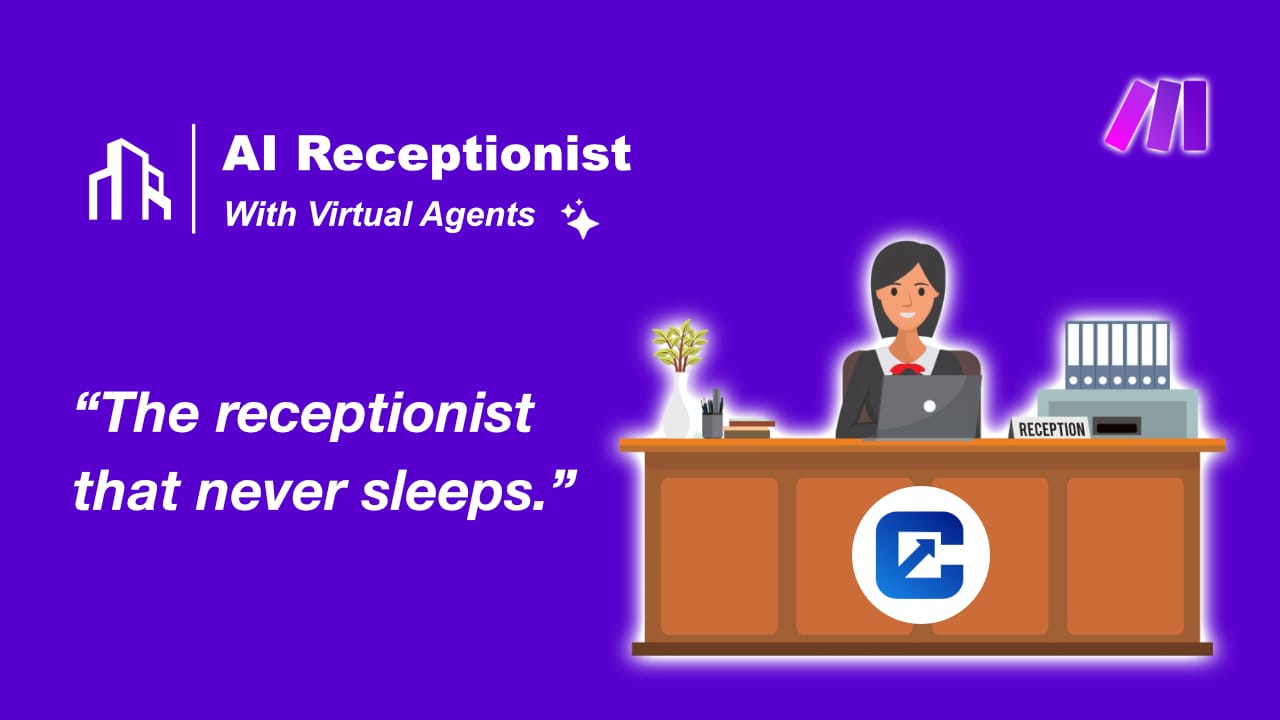AI Receptionist: How Virtual Agents Transform Customer Calls and Lead Capture

Every missed call is a missed opportunity. For many businesses this means lost revenue, dissatisfied customers, and an inconsistent brand experience. An AI receptionist changes this reality by providing a virtual agent that answers calls, qualifies leads, and integrates directly into your CRM and automation workflows. Companies that adopt this technology are not just saving costs but creating a scalable customer experience layer that works around the clock.

Centripe
CRM and workflow automation in one platform. Centripe helps you streamline customer management, sales tracking, and marketing campaigns with minimal setup.
- ✓ Smart CRM with integrated workflows
- ✓ Lead capture and sales automation
- ✓ All-in-one platform for SMBs

Make
Visual automation platform to connect apps, automate workflows, and scale processes without coding. Perfect for teams that want flexibility and speed.
- ✓ Drag-and-drop workflow builder
- ✓ 1,000+ app integrations
- ✓ Powerful automation at scale
What is an AI Receptionist
An AI receptionist is a virtual phone agent powered by artificial intelligence. Unlike voicemail or outsourced call centers, it delivers natural language conversations that capture intent and act on it immediately. It can book appointments, answer questions, route calls, and push data directly into systems like HubSpot and Pipedrive.
When paired with workflow tools such as Make.com or n8n, the AI receptionist becomes part of a wider automation strategy. Calls no longer stop at the reception level but trigger structured data flows, tasks, and follow-ups across the business.
Why Companies Adopt AI Receptionists
There are three main drivers behind adoption. The first is availability. A human receptionist can only handle a limited number of calls during office hours. An AI receptionist is active 24/7 and adapts instantly to demand.
The second driver is efficiency. Manual call handling often results in poor data capture or missed follow-ups. With AI, every interaction is logged, routed, and stored in your CRM. This allows sales teams to respond faster and with better context.
The third is cost-effectiveness. Hiring or outsourcing staff is expensive and often inconsistent in quality. An AI receptionist is predictable, scalable, and delivers measurable ROI by ensuring that every lead is captured and qualified.
Core Features to Look For
Not all AI receptionists deliver the same results. The following features matter most when evaluating platforms:
- Natural conversation handling that feels like speaking to a real person.
- CRM integration with HubSpot, Airtable, or Pipedrive to avoid manual data entry.
- Lead qualification logic that ensures only serious opportunities reach sales staff.
- Multi-language support for businesses with international customers.
- Workflow automation to trigger tasks in workflow automation systems.
These features ensure that the receptionist is not just a call handler but a true automation entry point.

Make.com Automation
Build and scale powerful automations fast. Scalevise designs reliable Make.com scenarios, handles complex logic and error handling, and keeps costs predictable as you grow.
- ✓ Expert scenario design & orchestration
- ✓ Robust error handling, retries & logging
- ✓ Clean handover with documentation & monitoring
How AI Receptionists Fit Into Workflows
The real value of an AI receptionist emerges when it becomes part of a wider system. A typical flow looks like this:
- A customer calls after hours.
- The AI receptionist engages, captures name, intent, and urgency.
- Data flows directly into HubSpot or Pipedrive.
- A Make.com automation triggers a follow-up sequence.
This structured process prevents lost leads and creates a professional impression even when no staff are available. The receptionist becomes an extension of the company’s digital backbone, supporting everything from lead capture to service triage.
Real-World Use Cases
Businesses across industries are already adopting AI receptionists:
- Law firms use them for client intake and consultation scheduling.
- Medical practices automate appointment booking and reminders.
- Real estate agencies qualify buyers before scheduling viewings.
- IT service providers use AI receptionists for first-line triage to reduce pressure on technical teams.
In each case the receptionist does not replace staff but enables them to focus on high-value tasks. Customers experience faster responses, while businesses avoid the risks of missed calls and incomplete data capture.
Implementation in Three Steps
Getting started is straightforward. First connect your phone line or VoIP service. Second, configure the AI with business information, FAQs, and routing logic. Third, integrate with your CRM and automation stack.

Centripe
CRM and workflow automation in one platform. Centripe helps you streamline customer management, sales tracking, and marketing campaigns with minimal setup.
- ✓ Smart CRM with integrated workflows
- ✓ Lead capture and sales automation
- ✓ All-in-one platform for SMBs

Make
Visual automation platform to connect apps, automate workflows, and scale processes without coding. Perfect for teams that want flexibility and speed.
- ✓ Drag-and-drop workflow builder
- ✓ 1,000+ app integrations
- ✓ Powerful automation at scale
Most companies can be up and running within hours. For organizations already using automation tools, implementation is even faster since workflows are already in place.
Conclusion
An AI receptionist is more than a tool for answering calls. It is a scalable automation layer that guarantees availability, improves customer experience, and delivers measurable cost savings. For growing companies it represents one of the fastest wins in modern automation.
By combining Centripe with CRM systems and automation platforms like Make.com, businesses can create a seamless bridge between customer calls and backend workflows. The result is higher conversion rates, better customer satisfaction, and a professional image at any scale.
